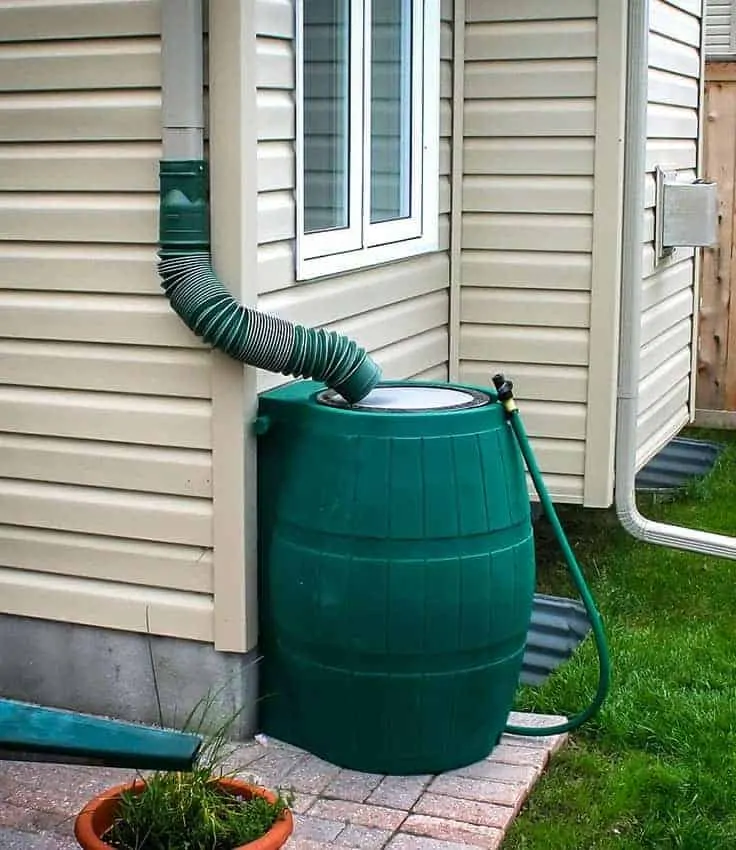

If feeding the sewer jetter downhill, you will need help from someone on the ground to stay near the pressure washer, control the trigger, feed up the sewer jetter hose, and guide the hose to avoid snagging it on gutters, flashing, and other objects.Gravity can help the sewer jetter pass though downspouts that are several stories high or have rough and irregular elbows, so it's sometimes necessary to feed the sewer jetter downhill, starting at the top opening.If you are using a gas pressure washer rated 2.0 to 4.0 GPM, the downspout is not more than 2 stories high, and there are few bends present, you can try feeding the sewer jetter into the bottom opening to power it uphill.A Needle Nose™ drain cleaner is a sewer jetter with a tougher, braided steel jacket and a special compact nozzle tip that allows it to pass through more types of elbows and transitions in gutter downspouts and other drains.If there is unusually stubborn debris clogging the downspout, you might be able to flush it out with a sewer jetter.Note: if you can't reach the clog with a hand held auger, you can try a flat sewer rod with a disk-shaped tip that can usually pass through more types of small diameter elbows and transitions, and is sold in lengths up to 100 Ft.Use the ladder to access the top of the downspout, insert the garden hose down into the top downspout opening, ask a helper on the ground to turn on the water, and check to see if the clog has cleared.

It may take several attempts to remove most of the blockage.
After you have inserted the drum auger all the way through the downspout, pull out the auger cable as you feed it back into the drum. Feed the auger into the top or bottom downspout opening by locking the cable, turning the drum in a clockwise direction, and then unlocking and feeding the cable as needed to pass the auger tip through any elbows and blockages. Read and follow the auger safety instructions, then put on work gloves and eye protection. A 25 foot handheld drum auger can be purchased for around $30. This is a good next choice, since the auger can work up or down through the downspout, can pass through most downspout elbows, and can usually break through the clogged leaves and debris. Try using a handheld drum auger if the downspout is still clogged. And if you're concerned about completing the job safely, consider hiring a gutter service company to help. Do not try this approach if you have no experience working on high ladders or aren't comfortable with the project. Before you attempt any work at roof height, take into account the accessibility and condition of the downspout, gutters and eaves, the weather conditions, and any other factors that might complicate the job. Important: when working at roof height, carefully position the garden hose so that it cannot pull itself to the ground, and use caution not to trip or get snagged on the hose as you move about the ladder. After packing the space between the garden hose and top downspout opening with the towel, have the helper on the ground turn on the water to see if the household water pressure can push out the clog. If the clog has not cleared, it may be possible to force out the debris by creating a seal between the garden hose and the downspout opening with a small towel. Then use a ladder to reach the top of the downspout, insert a garden hose down into the top downspout opening, ask a helper on the ground to turn on the water, and see if the clog clears. Expose the bottom downspout opening, divert the flow away from any landscape drain, and then use a garden trowel to reach up into the opening and remove any clogged leaves and debris that could have accumulated there. Start by cleaning the bottom downspout opening. To unclog a gutter downspout try your easiest options first. To unclog horizontal rain gutters, see our gutter cleaning tools. 
Note: this page is about vertical gutter downspouts.







 0 kommentar(er)
0 kommentar(er)
